Digital Marketing 101: How to Build The Best Digital Marketing Strategy
- December 27, 2018
We now live in a world where we are plugged into the internet during almost all of our waking hours. Tech-savvy business owners might have predicted this trend ten years ago, built basic websites just to say they had some sort of online presence, and called it a day.
However, we doubt that anyone could have foreseen how reliant we’ve become on the internet today. This is mainly how we get information now. Plus, with the rise of online sales, anyone can set up shop and consumers can peruse through countless products without even leaving their homes.
We stay connected so much, that a whopping 77% of Americans have a mobile device now. So why pass up the chance to rake in potential customers who are going to be on the internet anytime, anywhere?
Because there has been a massive surge in our internet usage, digital marketing has become complicated, albeit necessary.
Yes, it is necessary to keep up with the times. Gone are the days where you could just pay for a couple of physical ad spaces and count on actual word of mouth for your brand to gain some recognition.
These days, you have to reach your audience online and you have to build a community with them now more than ever if you want longevity in the market.
Written below are the basic components of digital marketing that you should familiarize yourself with. You’re going to encounter these things a lot more as you build your business up from the ground and develop a solid online marketing strategy.
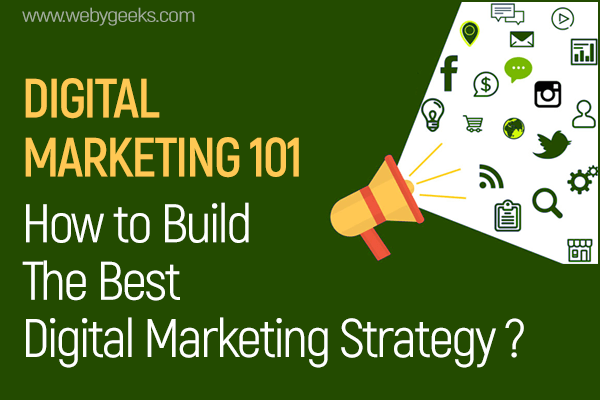
What digital marketing is and its importance
Digital marketing entails all the activities a company would perform through all available online platforms to gain some visibility. This is the virtual version of marketing done physically.
For example, in the old days, you might have gotten a catalog or two in your mailbox or you might have gotten together with like-minded hobbyists to discuss the latest niche products that have come out on the market. This is, in essence, the same thing, but done online.
However, with digital marketing, it’s a more comprehensive and exciting process, with the opportunity to engage with your potential customers and to really lay out what your company has to offer.
You might be asking why this is so important. Well, unless you’ve been living under a rock for the past 20 years (which we doubt, as you’re reading this article online), you know that people are spending more and more time online nowadays.
It has become so ingrained in our daily routines. In fact, 95% of adult internet users are on their devices right before they go to sleep. we’re sure you, yourself, are no stranger to the concept of shopping online.
It doesn’t take a rocket scientist to figure out that marketing done right has all to do with knowing your target audience’s activities – where they spend their time and what they actually want.
So it follows that you go where your potential customers are: online.
The origins of digital marketing
How did it come to this? Before the 90s, digital marketing was just in its conception. Some people may have been anticipating what commerce would look like in the future, but going online to do your Christmas shopping just wasn’t a thing yet.
The 90s was a magical time when big names like Google and Yahoo were just establishing their roots. Everyone was just testing the waters to see what could become of the internet and how it could be used by the masses.
Then The Web 2.0 took the world by storm. It abolished the old ways where companies would advertise to just individuals and it created this whole other way of including a larger audiences and paving the way for them to participate and be a part of an experience.
We would say that this is one of man’s greatest inventions: the avenue to give everyone a voice. This perked up the ears of the more adaptable business owners and they have somehow found a way for their customers to do their advertising for them in a smaller yet more varied scale.
Nowadays, just about anyone can create content and publish it online. We can truly say that we live in a small world.
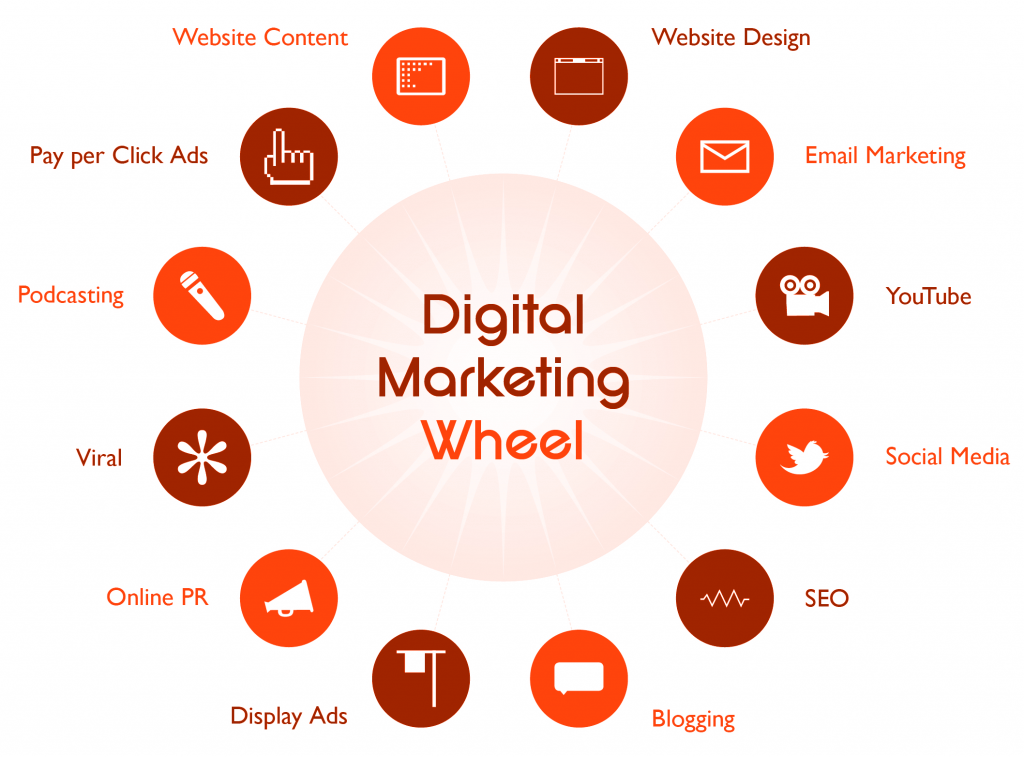
The basic kinds of digital marketing channels
Here, we’ve listed 7 ways you can build a strong digital marketing scheme. It doesn’t how big or small your company is. Every brand will benefit from any of these and it’s a smart business decision to make sure you look into each one.
1. Make a website
First, let’s get into the very basic step: getting your website up and running. Your website is your online representation. Before you branch out onto other platforms, you have to have a solid inbound marketing strategy. What does this mean?
In the physical world, this would be equivalent to your main store. Wouldn’t it be pointless to invite people to come over and check out the merchandise if the store is dilapidated and manned by salespeople who don’t know what they’re talking about?
What it means to have a good inbound marketing strategy is presenting your company in the best light through content that you created yourself.
Here are the key things to keep in mind when building your own website
- It has to look great and be easy to navigate
All companies benefit from a good design team. Coming up with a unique look that people will associate with your brand is very important.
That simple yet recognizable check that Nike has for their logo? A whole design team came up with that.
We’re not just talking about the logo. Your website’s design must be consistent all throughout and it must elicit what you want people to feel about your brand.
If you’re marketing kids’ toys, then it would not make sense for your website to be dark and chic. You want it to be bright and fun.
Make sure that there is an easy way for customers to contact you too if ever they might have some comments or inquires about the products that you offer.
- It has to be fast
Your website has to be optimized to load very quickly. In this age of speed and convenience, people will not wait around for slow websites, let alone trust a company that hasn’t invested to have a good website made.
- It has to be compatible with mobile devices
A poorly optimized website will look wonky on a smartphone. The content would be hard to read and it would be difficult to navigate. People will not go through the trouble if a website isn’t compatible with their phone. They would easily just close that tab and look for something else.
Optimizing your website for mobile users is a must now that people would rather be on their phone than a desktop setup.
- It has to be secure
The average person wouldn’t even have to know the first thing about whether a website is secure or not. Most browsers will warn you about it and discourage you from visiting the said site.
It’s very likely that you’re going to be selling your products on your website. People will not leave sensitive information if they know that the website is sketchy. Who would?
Making your website HTTPS will make sure all the information that your customers share with you is secure and this also helps get your brand higher up in the search rankings.
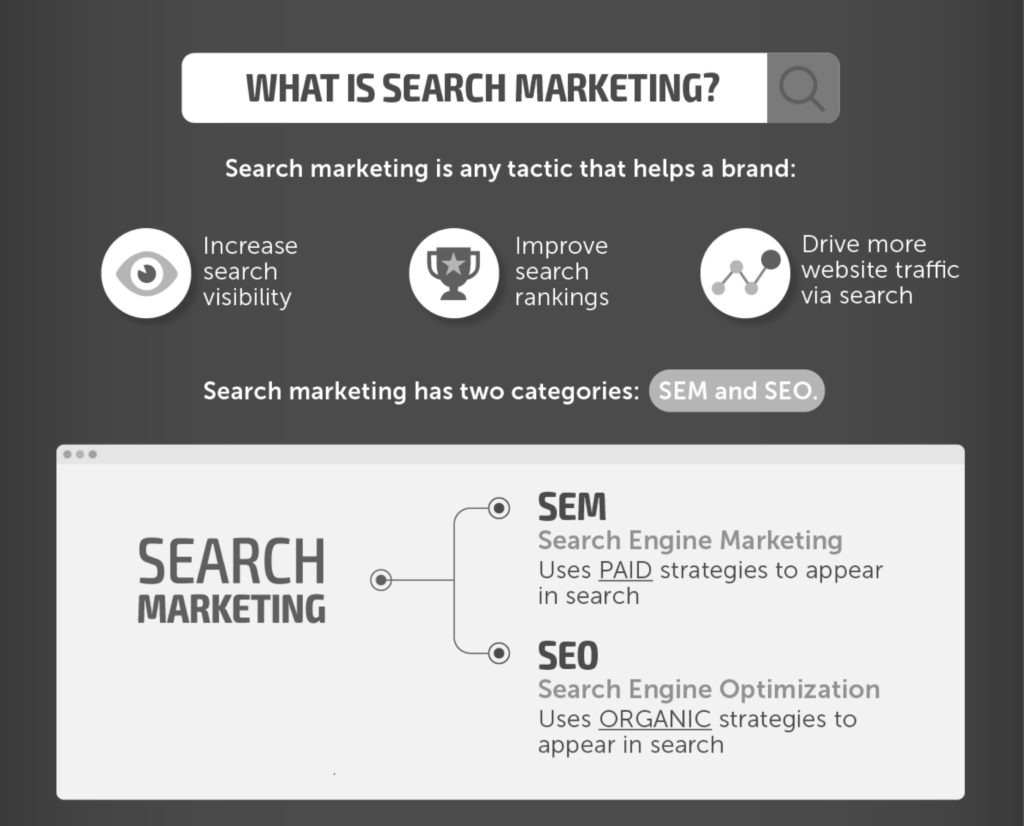
2. Perform SEO (Search engine optimization)
Search engine optimization is the powerful process of using niche-specific keywords to get your website on the front page of search engine search results. This is all done organically, which means it’ll take a considerably longer time than SEM (which we’ll get to in the next item).
SEO also includes leaving backlinks on forums and other platforms where there is a text exchange between members of a community.
People looking for specific products and services rarely ever get to even the second page of Google search results. They usually just click on the first few that pop up and this is why these sites get the most traffic.
It’s important to lay the groundwork for this kind of marketing because you can’t expect your website to be among the high ranking results without having to fill your content with optimized keywords.
Some of the algorithms that search engines to use to base their rankings also include the site’s security, whether it’s mobile-friendly or not, and how old it is.
It goes to show that older, more established sites get top billing.
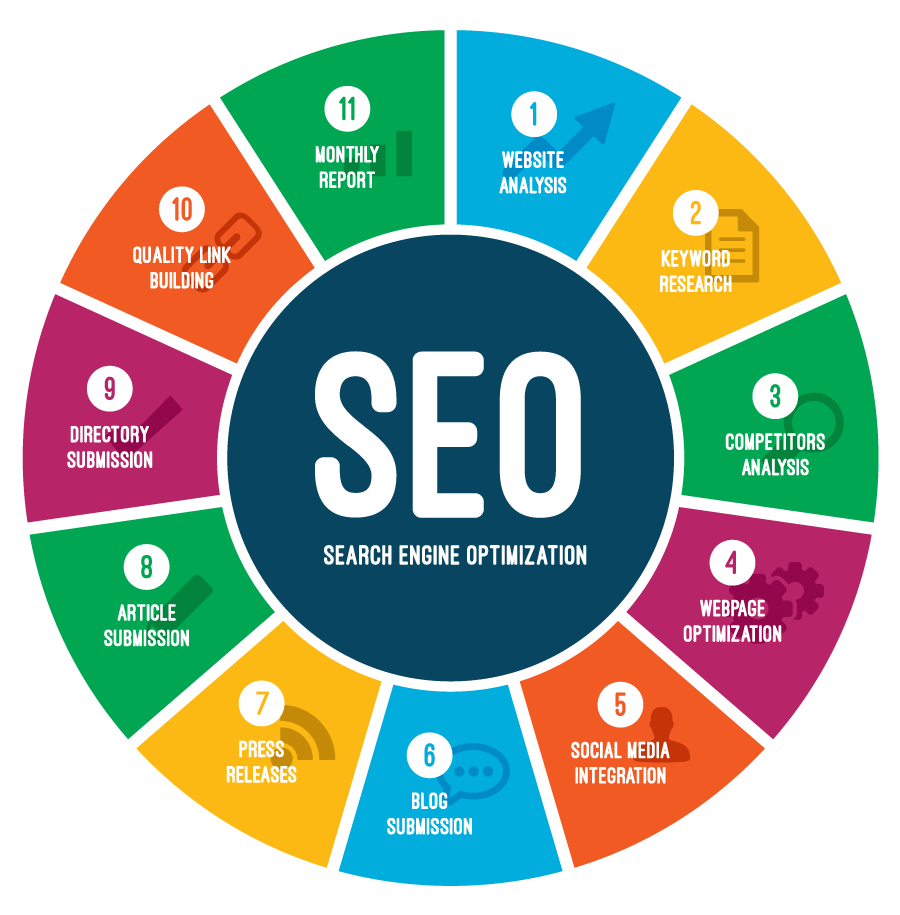
3. Perform SEM (Search engine marketing)
How is SEM different from SEO? With search engine marketing, you pay to get ads to show up among the top results through something called pay-per-click advertising (PPC).
You might be thinking that is a shortcut, and in a way it is, but it not for you to replace SEO with. This is an excellent tool to use if you’re not seeing the results you hoped you would get with your SEO efforts or you’re just starting out. Either way, the best thing to do is to pair this with SEO to get the best results.
SEO can take a long time and it’s not uncommon for business owners to get impatient. So how do you do PPC? Through an online auction. Ad space is the hottest commodity on the internet right now, so it’s no wonder that companies compete for the most optimal spots.
By using a service like Google AdWords, you can bid on optimized keywords (search queries that people will likely type in when looking for what you offer) and how much you pay determines your ranking on the search results.
However, while this might be a cool idea, you have to take into account how much you’re going to be spending on these ads. Since you “pay per click,” you have to make sure that these clicks convert into sales.
If they don’t, then you’d be losing money even if you’re more visible on the internet.
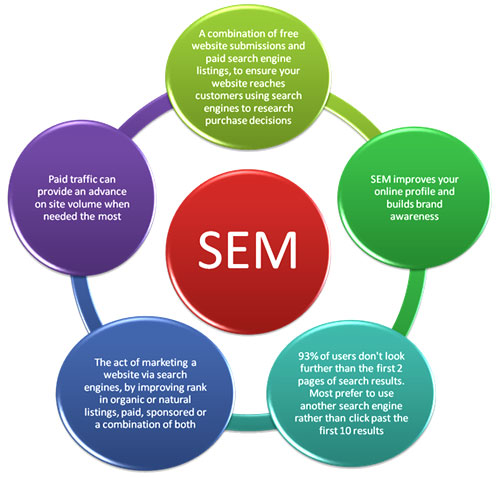
4. Advertise on social media platforms
70% of consumers expect businesses to have some kind of online presence. This may mean anything from a Facebook or Instagram page to a LinkedIn account.
Whatever the platform is, people think that this is the best way to communicate their concerns with a company and to learn more about their products, and maybe even their advocacies.
They’re definitely on to something. Anyone is just a few clicks away from giving a glowing review or a raving complaint these days.
There are many social media platforms out there and it’s important to know where your business fits. As a general rule, Facebook is any business’ best bet. It has the most traffic and it’s very versatile, allowing you to post in text, photo or video form.
However, it is worth mentioning that an organic reach on these platforms can be fruitless grind. While this humanizes a company, giving it personality and the chance to connect with its customers, it’s necessary to supplement your activities on social media with paid ads.
That way, your business will be visible to anyone who just happens to be scrolling through their feeds without ever having to search for you.
5. Automated marketing through emails and newsletters
The best part about this kind of advertising is that it costs almost nothing compared to the gains. It’s not difficult at all either, but it delivers amazing results. We’re talking about 4,400% ROI. That means for every dollar you spend, you get $44 back.
Everyone checks their email fairly frequently, if not once, a couple of times per day. According to the Forbes, 66% of business leaders check their email first thing in the morning. What’s the smart thing to do with this piece of information? Stay visible in your customers’ inboxes.
If you’re thinking that this can be quite invasive, then we’re happy to report that more than 60% of consumers love getting these promotional emails. Almost 30% of them even want to receive these emails more often.
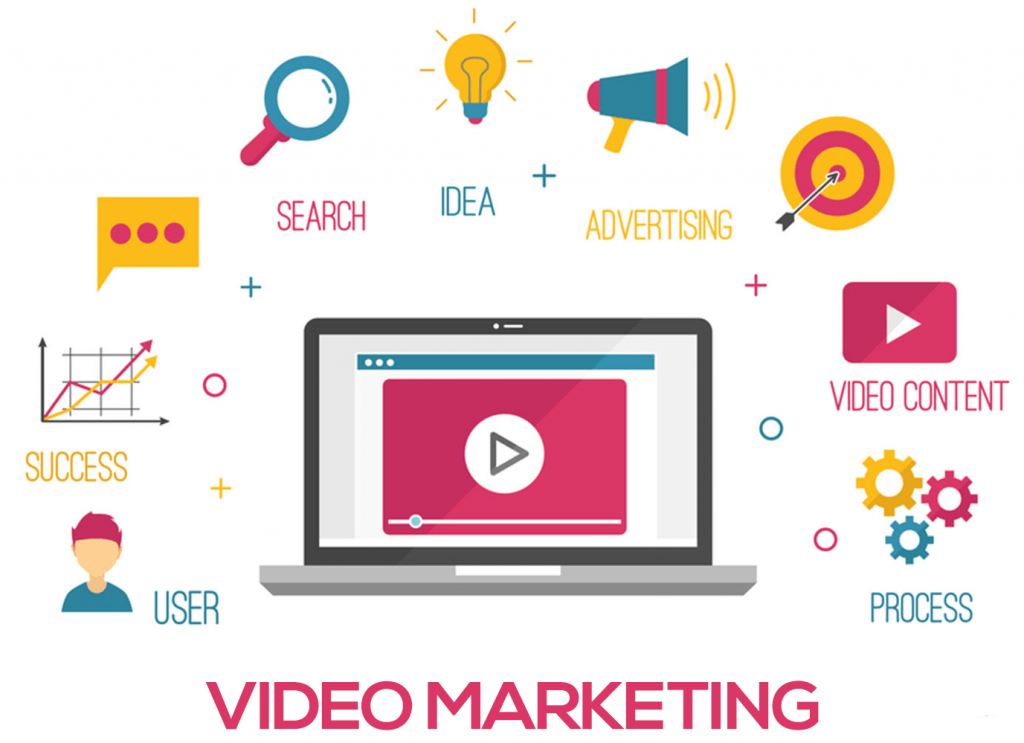
6. Video Marketing
Video marketing has proven to be the most effective marketing scheme as of late. With the internet steadily replacing cable TV, people get their entertainment more often online. Here are some facts that should convince you that this area is worth investing in.
- You’re 50 times more likely to show up organically in Google search page results with a video than with just text.
- YouTube is actually the second most popular search engine just below Google.
- Online videos are like TV commercials, but significantly cheaper to produce and publish.
- A site is more likely to get more traffic if it has videos.
- 50% of consumers say that watching videos about products help them decide whether or not to buy the said products.
The best marketing videos should be no longer than a minute. If at all possible, they should not even exceed more than 10 seconds. This is because we’re dealing with a consumer population with a shorter attention span. Shorter videos are more impactful and they’re less likely to be skipped.
What types of videos should you be making?
- Videos that discuss your products or services in depth and common issues your customers might encounter
- Videos of your past customers giving good reviews and testimonials
- Videos about your company culture, what it’s like to work for your company, and how you help the community at large
7. Remarketing
Do you ever notice that the ads that you usually see are tailored to your interests? Say you’ve been a bit fashion conscious for the past month. Even way after you’ve stopped looking for clothing items, you’ll still be seeing ads for them.
This is also why you’ll get an occasional popup from certain sites asking for permission to use something called “cookies.” This is all a part of remarketing. These sites pull these off by leaving a small string of code into your browser.
These codes keep track of your activities online without using any sensitive information, like your contact details or credit card information (so it’s legal).
Once your browser is loaded with this code, it can determine when you leave a specific site and when you visit another one. It’s very likely that ads from the sites you visited previously will show up in the sites you visit next.
Having this kind of visibility, there is 70% increase in the chance that your audience will convert to sales. That’s incredible for a few lines of code. You can do these on any social media platform too.

Track your progress
Even if you do all these, it wouldn’t matter if you don’t keep track of your Metrics and Key Performance Indicators (KPI). Staying on top of these will determine how successful you’re going to be at digital marketing. This isn’t a game of estimations. This is a game of facts.
Metrics determine:
- The amount of page views you get
- How long people stay on these pages
- How much new traffic you’re getting
- How high or low you are in the search rankings
KPIs determine:
- You total amount of sales
- How much revenue you’re getting
- How many leads convert to sales
- How frequently are booked through calls
- The number of leads you get
- How much one lead is costing you
- Return on marketing investment (ROMI) – how effective your marketing campaign is
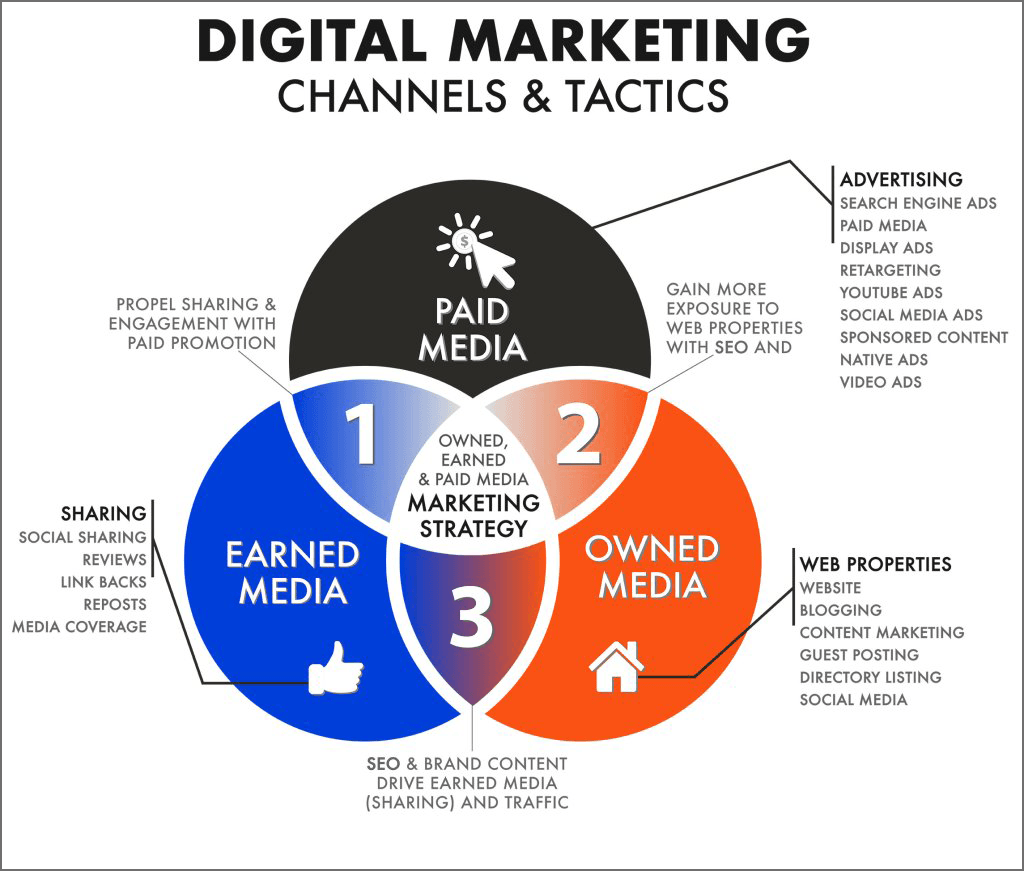
How to ace digital marketing
At the end of the day, the key to successful digital marketing is conduct a digital competitive analysis. This is how you’ll know how you stack up against your competitors. We can do this for you.
You might have an amazing team of online marketers behind you, but it won’t guarantee your staying power in the market without proper analysis being done.
You can stay ahead of your competitors by knowing what they’re doing right and reverse engineering these tactics. You’ll also be aware of the mistakes you’re making and how to correct them.
Contact us to start developing the best digital marketing strategy today, so you can steer your business to the best path it can take.
MARKETING CONSULTATION
One of our experts is online, she will get back to you

Tanya Mendes
Marketing Manager


